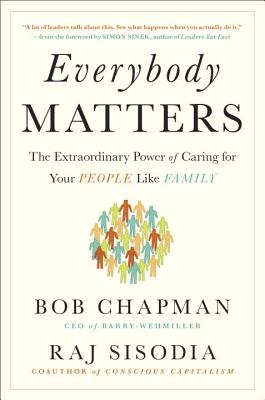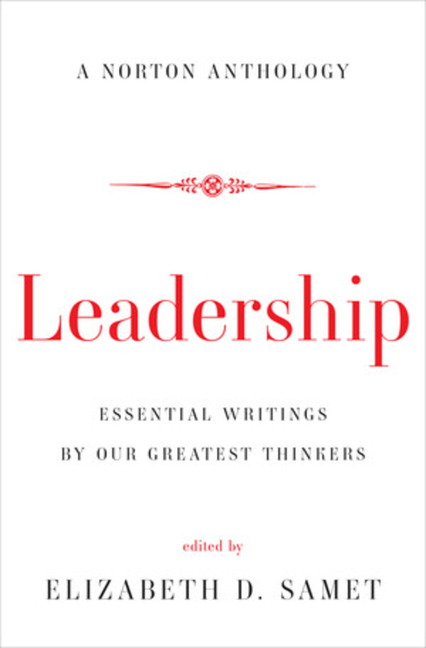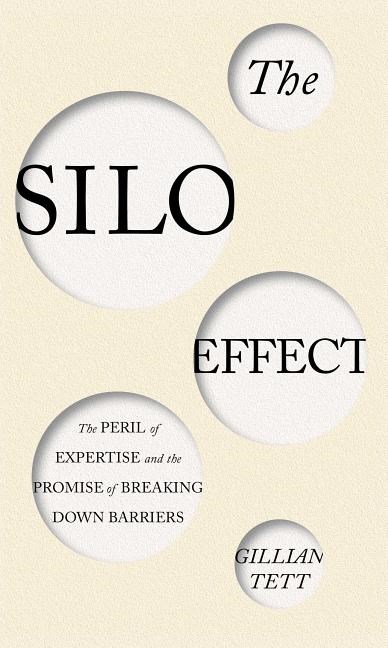Inside the Longlist: Leadership & Management
November 11, 2015
Our General Manager Sally takes a look at the Leadership & Management category of The 2015 800-CEO-READ Business Book Awards longlist.
At 800-CEO-READ, we pride ourselves on treating each other like family. This may be most apparent on “Fun Fridays,” when starting at around 4pm everyone who can sets aside their work and gathers with a beverage of their choice throughout the office. It often evolves past our own communing over a glass of wine or bottle of beer to the arrival of children and spouses and friends who enjoy the opportunity to talk and play in our large and casual new office space.
When our Founder and former President Jack Covert retired, he shared this sentiment:
I’m most proud of helping 15 to 20 people start their lives. I have kids out there. Grandkids. Houses. I helped them discover a depth of character they didn’t know they had.
He’s speaking, of course, of the people who have made and still make a living here, that built their lives with the jobs he gave them. As the current General Manager of our company, I believe it is my responsibility to continue Jack’s focus on people, and even push the assumed boundaries of how a company can help employees flourish at home, at work, and where those two areas intersect.
That philosophy—to treat your employees like fully-realized people, and the belief that your company will be all the better for it—was a common thread running through many of the best leadership and management books of 2015. Some leaders and managers may be worried that this year’s books, and, as a result, my picks, ignore more traditional “hard” topics like strategy and growth in favor of the “soft,” but rest assured that each of these books will make clear just how the people in your organization, when you trust them and treat them as the valuable investments they are, can guide your strategy and accelerate your growth.

Everybody Matters: The Extraordinary Power of Caring for Your People Like Family by Bob Chapman and Raj Sisodia is a perfect example of this. It gained considerable weight as I read it, because I loaded the entire book with post-it flags, marking the ideas I wanted to come back to. Chapman’s overarching idea, the one he builds his company and book around, is that: “The machinery we build is just the economic engine that enables us to touch lives. The flourishing of those lives is our paramount concern.” And every bit of hard management advice he provides to instill that idea seemed tailor-fit for our small company, despite the fact that Chapman is the CEO of an enormous manufacturing company that grows primarily via mergers and acquisitions. And in the process of instilling his company’s dedicated approach to humanistic leadership in the companies they acquire, the message in Bob Chapman’s book has been born out:
The Barry-Wehmiller approach to transformation, rejuvenation, and renewed growth has been proven to work in dozens of companies in different industries and diverse cultures around the world. No matter the status of the industry—distressed or vibrant, even companies experiencing severe challenges—our approach has created tremendous stakeholder value.
I’ve witnessed what a commitment to people can do for a company--at 800-CEO-READ, our low turn-over and fiscal health is, I believe, a direct result of our people-first philosophy--, so it is no wonder I feel so convinced that Everybody Matters is the book every leader and manager should read. This focus can and should be applied to every company of every size, and this engaging book will help you do so with the stories of employees whose work lives were made better by managers who were enabled by an enlightened company policy to care fully for the their people.
But the how is always the challenge. How can leaders truly motivate their people so that high performance becomes intrinsic to the nature of the company? Last week, I was asked a provocative question by one of our employees: ”Do you like managing?” I answered, with gusto, “Yes, I love it.” I explained how managing appeals to the writer in me that has always enjoyed observing human nature and figuring out what motivates people, and that my amiable social style enjoys the work of 'writing the stories' that can get everyone in our organization working toward a common cause and vision. But not everyone is comfortable with this approach.
Primed to Perform: How to Build the Highest Performing Cultures Through the Science of Total Motivation, by Neel Doshi and Lindsay McGregor, will provide a methodology for many leaders. Doshi and McGregor explain, explore, and advocate for a method of inspiring company-wide performance called Total Motivation (or ToMo). Unlike some of the more narrative or anecdotal books that advise on rich company cultures, Primed to Perform offers something more quantifiable. The authors themselves say they wrote the book in order to “reveal the science behind the magic” of a high-performing culture, and it is scientific in its examination of the topic and its execution. ToMo, the authors explain, consists of six motives for why you do the work you do: Play, Purpose, and Potential are direct motives that drive performance, while Emotional Pressure, Economic Pressure, and Inertia, are indirect motives. This book then applies the ToMo strategy to such practical quandaries as when to pay for performance (and more commonly, when not to). This is what makes it an excellent book for those leaders and managers who wish to concentrate more literally on how culture determines success, and what motivations can be used to build a better culture. It took what appeals to me as a writer in the job and gave me a scientific approach to execute it.
Speaking of appealing to the writer in me, I was worried my liberal arts education may have biased me when I brought Norton’s Leadership: Essential Writings by Our Greatest Thinkers, edited by Elizabeth D. Samet, to the rest of the editorial staff at our first awards meeting. As an English major in college, two of my most valued possessions were my Norton Anthologies of English Literature, because I adored the nearly onion-skin-thin pages, the tidy print, the (somewhat naïve) belief that within those tan covers lay everything important ever written. But it turns out that everyone else here saw the worth of this unique tome, too.
If I did choose this book due to bias, then so be it: it’s an excellent anthology that will challenge and excite you. Within its pages you’ll find a broad assortment of creative writings about leadership, primarily found in fiction and inspiring cultural figures. It is the curation by Elizabeth D. Samet that makes this book so notable: there’s Shakespeare and Mandela, Woolf and Didion, Machiavelli and Lincoln, and an added value comes in the form of Samet’s Recommended Reading and Discussion Questions that open and close each section. The pieces themselves are categorized to take you on a journey that will educate you on all aspects of leadership, and is the application of liberal arts to practical matters at its best.
[T]he argument of this book is that the work of understanding, analyzing, interpreting, comparing, contrasting, synthesizing, and reflecting—the work that serious literature compels a reader to perform—can help awaken leaders and keep them ever sharp.
If you wish to expand your understanding of leadership beyond corporate policy, and you believe, as I do, that literature is our best source for understanding humanity and that leadership is responsible for how well a business intersects with humanity both within and outside of the company, then this book will provide you with an astoundingly wide education. It is a beautifully envisioned and organized collection.
Of course, one thing you learn from literature and a study of social science, is that human beings take comfort in our ability to organize. That’s one of the reasons that eliminating rote policies and expanding our trust in employees is so difficult for many leaders and managers. Siloing responsibility and tasks can gives us false sense of security that we can guarantee results, but Gillian Tett disagrees in The Silo Effect: The Peril of Expertise and the Promise of Breaking Down Barriers, a multi-layered and well-written exploration of how specialization limits our innovation and creative potential, and can create unhealthy competition between company divisions. So why do we humans resist expanding our baoundaries? Simple, Tett says.
[I]t takes time and energy to make enough space to collide with the unexpected, roam around the world, and gain an insider-outsider perspective. Staying in a silo, or just accepting the boundaries we inherit, often appears a lot easier.
Tett lays out the risks plainly in the first half of her book, explaining how silos crush innovation, conceal risks and create tunnel vision, and she helps incite change in the second half of the book with chapters that present strategies for “How Individuals Can Silo-Bust Their Lives” and “How Breaking Down Silos Can Produce Profits.” What it clearly demonstrated is that it is important that companies allow their employees to work beyond the limits of their specialties or silos because it’s better for the individual and the organization.
This past month, our company has had immediate experience with expanding our physical boundaries we we moved into our new, much bigger office building which has forced us to get comfortable with being uncomfortable. In other words, this new location will enable us to add to our services, and with addition, no matter how welcome, comes adjustment. We have also had the opportunity to do something we’d been unable to do in our former cramped space: map out where the ping pong table would go, where the basketball hoop would stand, where the massage table could be set up and left up. Previously, we’d shoe-horned some of these perks into our workspace, often using areas for multiple uses (e.g., using the ping pong table for our customized mailing projects.) Now, we had the space to allocate, and it felt… self-indulgent. Or at least it did when our friends and family would come and tour our new building and ooh and ahh over our more tangible benefits. But, here’s the thing: what seem like perks to others, particularly people who worked most of their work life in previous decades or generations, are often regarded as necessities to the new workforce. And that’s the focus of Rodd Wagner’s book, Widgets: The 12 New Rules for Managing Your Employees As If They're Real People by Rodd Wagner.
Wagner explains how things have changed in terms of who holds the power between companies and their employees.
Most companies are quite unprepared for what they now have on their hands—more individualistic, mercenary, impatient, thrill-seeking, connected, and loud workers than have ever been seen before, people who trust business less than any previous workforce and who, regaining power, will require better leadership and managing than at any time before.
Sure there are many companies out there who still hold tightly to the reins, but Wagner makes a strong, statistics-based case for how this new age of work benefits from the creativity, flexibility, and adaptability that comes easier for employees who are treated well as human beings and, as a result, become more fully engaged.
It is fitting then, to close this overview with Widgets, because Wagner’s book closes with this thought that aligns so well with our Founder’s and well-encapsulates the most prevalent trend in business books this year:
Your people are not your greatest assets. They’re not yours, and they’re not assets. They are someone’s son or daughter, brother or sister, mom or dad. They’re people—people for whom you have a crucial stewardship and with whom you are building a personal legacy that will last long after you have retired. Do right by them, make them happy, and they will be the major force behind the success you share with them, and the best part of being privileged to be a leader.
Last week, a delivery guy walked through our main office and joked, “It looks like someone’s living room in here,” and we couldn’t have been more proud of that assessment.






